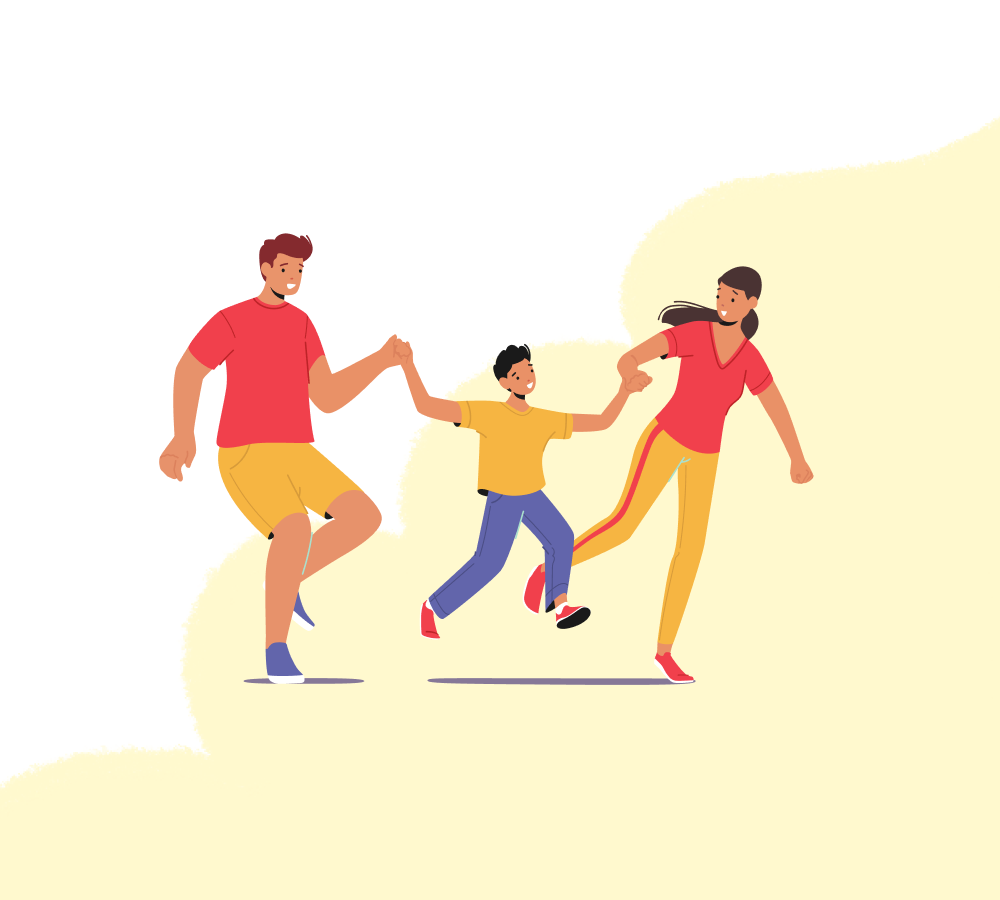How to Balance Screen Time for Kids – Parenting Tips
The Modern Parenting Paradox
Screens are everywhere — school tablets, YouTube, cartoons, video calls with grandparents.
They connect our children to the world, yet disconnect them from the present moment.
The challenge isn’t screens vs. no screens — it’s how to balance screen time wisely.
Finding that balance defines modern parenting — and it’s what separates screen stress from screen success.
Table of Contents
1. Why Screen Time Feels Uncontrollable
Kids don’t just love screens — they’re wired to.
Apps, videos, and games are designed to trigger dopamine — the brain’s reward chemical.
According to a 2025 study by the World Health Organization (WHO), dopamine spikes in kids exposed to fast-changing visuals mirror mild addictive patterns.
Parents often describe it perfectly:
“One more video” turns into an hour.
“Five more minutes” becomes bedtime chaos.
Balancing screen time isn’t about removing screens — it’s about teaching control and creating consistency.

2. The Hidden Effects of Too Much Screen Time
Excessive screen exposure impacts more than eyes. It reshapes:
- Sleep: Blue light delays melatonin release.
- Mood: Overstimulation increases anxiety and irritability.
- Focus: Rapid screen-switching reduces sustained attention span.
- Social connection: Passive consumption replaces real interaction.
In the UK’s Digital Wellbeing Index 2025, children with unregulated screen time showed:
- 33% higher mood fluctuations
- 40% shorter attention span
- 27% more parent-child conflicts daily
These are fixable — but only with structure.
3. Recommended Screen Time by Age (WHO + AAP Guidelines)
| Age Group | Recommended Daily Limit | Focus Area |
|---|---|---|
| Under 2 years | No screen time, except video calls | Real-world interaction |
| 2–5 years | 1 hour/day, high-quality, co-viewed content | Language, creativity |
| 6–10 years | 1–1.5 hours/day, structured breaks | Educational focus |
| 11–18 years | 2 hours/day (non-educational) | Digital literacy, self-regulation |
Important: Quality matters more than quantity. A 30-minute co-viewed documentary beats 2 hours of YouTube scrolling.
4. The 5–3–1 Formula: A Smarter Way to Balance Digital Use
Developed by child psychologists, the 5–3–1 formula is a simple framework used globally by parents in 2025:
- 5: Core offline activities every day — play, reading, conversation, nature, rest.
- 3: Structured digital interactions — educational, creative, or communication-based.
- 1: Reward-based recreational screen use — shows or games, after responsibilities.
This method transforms “screen policing” into screen purpose — giving screens a role, not control.
5. Real Parenting Techniques That Work
1. Create Clear Tech Zones
No screens during meals, family talks, or bedtime.
Physical boundaries make digital limits visible.
2. Use Visual Timers
Apps and smart timers let kids see how much time they have left — making limits tangible.
3. Co-View and Discuss
Watch together, comment, ask questions. It turns screen time into a learning moment.
4. Link Screens to Routine, Not Emotion
Avoid giving screens as comfort or punishment — it strengthens emotional dependency.
5. Model Digital Balance
Your habits teach louder than your words. Set your own “no-scroll” hours.

6. Creating a Screen Schedule That Sticks
A great schedule is simple, consistent, and visual.
Example: The “Screen Circle” Routine
- Morning: none (focus on readiness & school)
- Afternoon: 30–45 mins educational or creative use
- Evening: 30 mins family movie/game together
- After 8pm: screen-free (wind-down mode)
Tips to make it stick:
- Use magnetic charts or sticker trackers
- Reward consistency, not screen avoidance
- Keep weekends flexible but capped
7. Using Technology for Good
Technology isn’t the enemy — it’s a tool.
Educational games, language apps, and virtual art platforms spark curiosity when guided.
Instead of removing screens, teach digital citizenship:
- Question what you watch
- Choose quality creators
- Create, don’t just consume
Balanced exposure today builds digital wisdom tomorrow.
8. How TinyPal Helps You Create Balance
TinyPal Parenting App was designed for modern families — not to remove screens, but to manage them intelligently.
It helps you:
✅ Create age-based screen schedules
✅ Track screen time across multiple devices
✅ Get personalized insights based on behavior patterns
✅ Teach digital self-regulation through family routines
TinyPal blends psychology, technology, and parenting science into one tool — helping families live smarter, not stricter.
👉 Download TinyPal Parenting App — your partner in calm, confident digital parenting.

9. FAQs
Q1. What’s the healthiest way to balance screen time for kids?
Follow daily routines, co-view content, set time limits, and emphasize offline play.
Q2. How do I stop screen arguments?
Replace “no” with structure. Offer clear rules, consistent schedules, and visible timers.
Q3. Are educational apps safe for long use?
Yes, if supervised and balanced with physical play and rest.
Q4. How can TinyPal help manage screen time?
It provides customizable screen schedules, device tracking, and positive habit reminders based on your child’s age.
10. Final Thoughts
Screens aren’t bad — imbalance is.
Parenting in 2025 isn’t about fighting technology — it’s about mastering it.
Teach kids to use screens consciously, not compulsively.
Because true digital balance isn’t about restrictions.
It’s about empowering children to control the tool — instead of being controlled by it.
👉 For personalized screen-time plans and expert guidance, download the TinyPal Parenting App.

